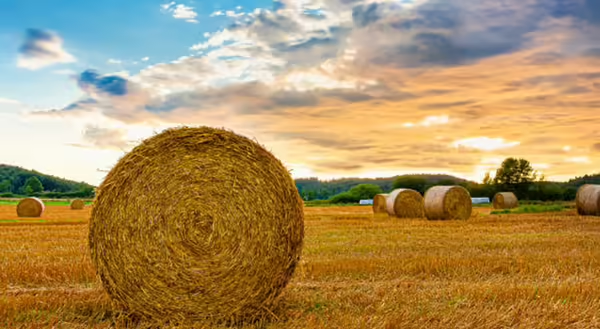
Many cattle producers are still looking for economical forage to use as winter feed for beef cows. Cornstalks, bean-stubble, wheat straw, and CRP hay are a few of the low-quality forages that are being considered by farmers. Some areas that experienced drought conditions this summer had CRP (Conservation Reserve Program) acres released for haying. Thus, questions are coming in about CRP hay. CRP hay is not something cattle producers use annually and many may be unfamiliar with its characteristics. Thus, I will discuss my thoughts on CRP hay… The Good, The Bad, and The Ugly.
The Good – we have forage for cattle to consume. Without a base forage, you may have had to resort to limit-feeding high concentrate diets. Those definitely are not an easy transition from grass and the cows tend to bawl and pressure fences. Likely, CRP hay was economical to put-up or purchase. The Good is simply that we have something for cows to keep their bellies full and provide a base forage to their diet.
The Bad – CRP hay is poor quality forage. It should be viewed as a feed ingredient, not the entire diet. Hay from CRP will be low to moderate in protein (8-10%CP) and low energy (<50% TDN). Cattlemen need to supplement this forage with protein and energy. Co-products, grains, or other supplements are needed to meet nutrient requirements of the cow. In many cases, this forage will be mature and long stemmed. Consequently, the rumen will have to work harder to digest this forage. Supplemental protein will be needed to help feed the rumen microbes and ensure proper digestion. Bottom line, test your CRP hay and supplement it accordingly.
The Ugly – Something we may not immediately think about is the potential of CRP hay to contain a large amount of weeds and more importantly weed seeds. These weed seeds are likely to end up in the manure of cows that are fed this hay. Where this manure is deposited or spread is important to controlling future weed populations. If you are feeding CRP hay on pastures, be aware that you may be introducing numerous weeds to your pasture.
All in all, cattle can utilize poor quality forages. Hay made from CRP acres will likely need supplemented to meet the nutrient requirements of beef cows. Thus, it is important to test this forage and utilize co-product feeds and/or grains to supplement protein and energy. Be aware that weed seed may be of higher inclusion in this hay. As a result, feeding areas may need to be managed for higher weed pressure in the future.